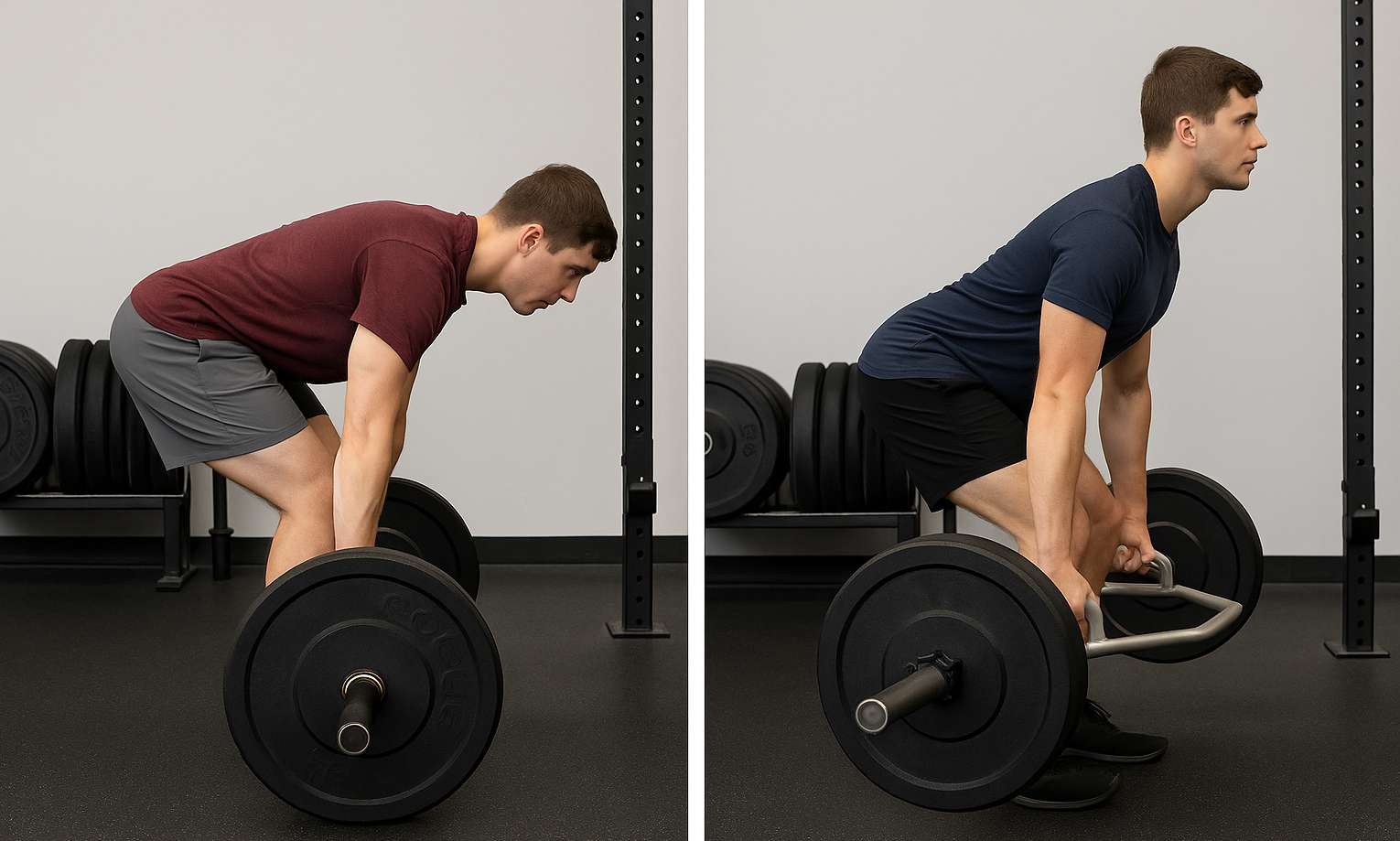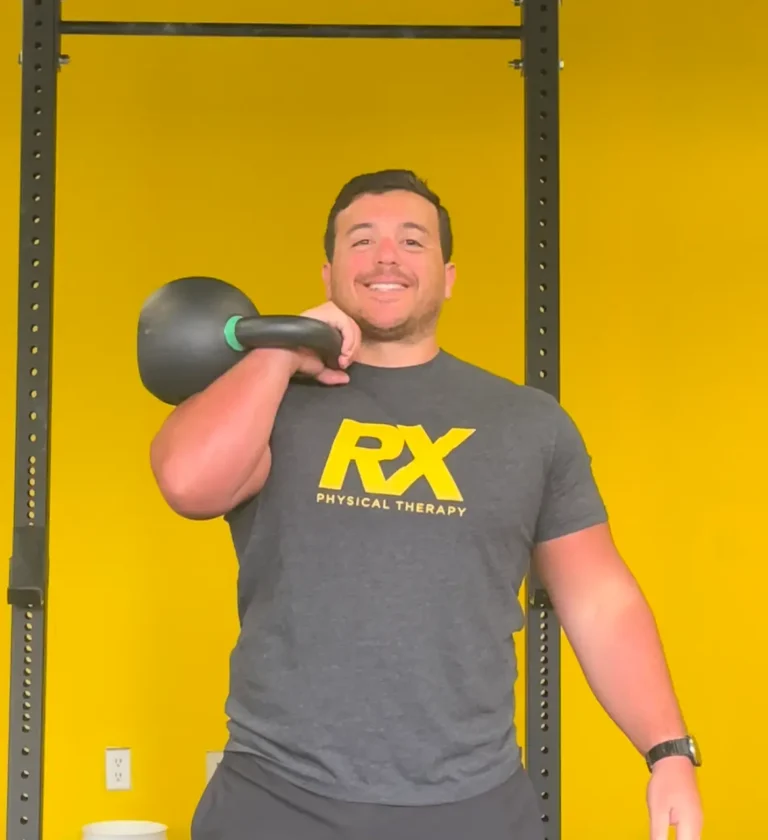A Step-by-Step Guide to Rebuild Confidence, Control, and Strength
Low back pain can feel like a dead stop to your progress in the gym—especially if you love to lift. But here’s the good news: you can return to deadlifting safely and stronger than before.
The key? Rebuilding hinge tolerance with the right mix of breathing, bracing, mobility, and smart progressions.
At RX Physical Therapy in Wayne, NJ, we help athletes and active adults return to the movements they love—not avoid them. This post breaks down a step-by-step process for making deadlifts a part of your routine again—without fear.
🚦 Step 1: Re-Educate Your Hinge Pattern
When you’re in pain, your movement changes. Many lifters begin squatting their deadlifts or rounding their back instead of hinging properly. Before we reload the bar, we must reprogram the movement pattern.
Start with:
- Hip Hinge with Dowel or Wall Tap
Cue: Push your hips back, keep your spine long, and minimize knee bend. - Kettlebell Deadlift
Cue: Keep the bell between your ankles and use a wedge-and-drive motion—not a pull.
✅ Goal: Feel tension in glutes and hamstrings—not your low back.
🧠 Step 2: Master Breathing and Bracing Mechanics
Bracing isn’t about sucking in or flexing hard—it’s about creating intra-abdominal pressure using proper breathing mechanics.
Train it with:
- 90/90 Diaphragmatic Breathing
- Bear Plank with Exhale and Brace
- Crocodile Breathing
Progress to:
- RDLs or trap bar lifts while maintaining a deep, intentional brace.
✅ Goal: Inhale through the nose → fill belly and sides → brace like you’re preparing for a punch → lift.
⏱️ Step 3: Use Tempo to Build Control and Confidence
Tempo work teaches control and builds tissue tolerance without heavy loads.
Try:
- 3-1-1 Tempo Trap Bar Deadlifts (3s down, 1s pause, 1s up)
- Tempo RDLs using a kettlebell or light barbell
✅ Goal: Own the eccentric. Pause with control. Prioritize clean reps over heavy reps.
🛠️ Step 4: Smart Progressions (Trap Bar → Sumo → Conventional)
All deadlifts aren’t created equal—some variations are more back-friendly during rehab.
Progression strategy:
- Trap Bar Deadlift: Easiest on the spine; keeps load centered
- Sumo Deadlift: Reduces spinal load; builds hip control
- Conventional Deadlift: Return only when form and bracing are rock solid
Still hesitant? Stick with dumbbell, kettlebell, or landmine deadlifts.
✅ Pro Tip: Start from elevated positions if needed and work toward floor lifts over time.
🚀 Step 5: Build Back to Capacity
Once you’re moving well and pain-free, it’s time to reload—gradually.
Sample Progression:
- Week 1: 3×8 @ 40–50%
- Week 2: 4×6 @ 50–60%
- Week 3: 3×5 @ 60–70%
- Week 4: Deload or reassess
✅ Note: Post-lift muscle soreness is okay—pain is not.
👊 Final Thoughts: Don’t Fear the Deadlift—Fix the Foundation
You don’t need to give up deadlifts. You need a smarter plan that respects where your body is now and helps rebuild your trust in the hinge pattern.
At RX Physical Therapy, we help you return to what you love with confidence and clarity.
📍Need Help Getting Back to Deadlifting?
📆 Book an assessment at RX Physical Therapy in Wayne, NJ
💪 Return to lifting with confidence—not fear
➡️ Schedule your visit or DM us on Instagram @rx_physical_therapy


